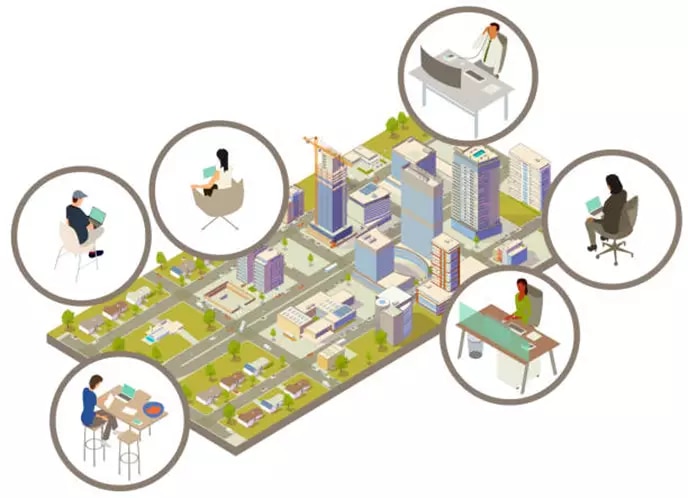
Since the pandemic, many businesses have realised that the hybrid office concept and demand for remote work has not only increased, but is likely here to stay. Naturally, there are positives and negatives to these work models, however the correct utilisation of these tools can result in a more productive, engaged and happy workforce.
Globally, the economy has become volatile as a result of the pandemic and as a result many uncertainties have latched along since 2020. While the situation is more stable in some countries such as Australia. New Zealand and Dubai, there are also a few places which are experiencing the polar opposite including China and Hong Kong.
As of 2022, many businesses expected work from home arrangements to be a temporary solution, and that workers would return upon the easing of lockdown restrictions. But over the months, we can see that many employees strongly prefer a flexible form of working and there are some strong statistics to back this wave.
A survey conducted by Slack found that 72 percent of workers prefer a hybrid work setting, while research by other sources have shown after Covid 92 percent of people surveyed expect to work at least one day per week at home.
The argument for a hybrid concept may be strong, but for many businesses their ability to implement this may be limited, or the impact it will have on their performance is simply unknown.
Common Remote Work Challenges
Globally, workforces now are more spread out then they ever have been. Through virtual offices and hybrid offices, the access to a greater talent pool has certainly increased.
While hybrid is preferred, its counter part of a complete remote setting only has a 13 percent preference. Here's why:
- The company culture starts to disappear
- Isolation and distraction which lead to burnout
- Zoom fatigue
- Decrease in motivation
- Reduced access to company tools
This small list is just a few reasons as for why permanent remote work can lead to burnout and the process to overcoming burnout can be quite difficult.
What is The Impact on The Economy?
If permanent remote working is leading to burnout, then its effects on the economy is imminent and will likely reflect in the productivity and turnover of employees.
A business which is drastically dropping its number of employees will not only deplete the morale of current workers, but may also result in a paradoxical situation in which there are higher unemployment rates whilst also an increase in job openings.
An example of this global trend can be seen in Australia. According to the Australian Bureau of Statistic, during the end of February 2022 1.3 million people had changes their job, marking the highest annual job mobility rate since 2012. A further 2.1 million people either left or lost their job and
With 2021 being named as the year of the "Great Resignation", these statistics come with no surprise.
The Hybrid Office Solution
The globe has been on the cusp of shifting to hybrid work for a while now. A study conducted by Gartner found that " Hybrid workplaces would be the preferred model for 74% of employees by 2025."
This has also derived from a strong change in perspective of work. Prior to Covid, working was considered an integral part of people's lives, however after the strong mental and physical health impacts of Covid, wellbeing is now the focus.
According to a survey done by Microsoft, 48 percent of Australian and New Zealand respondents are more likely to focus on their health over work. The same question asked in North America, Latin America, Asia/Pacific Islands and Europe showed 52%, 70%, 57%, and 44% respectively in terms of prioritising health over work.
Keeping these facts in mind, the most obvious solution appears to be a hybrid office. The balance between both settings, is appearing to be the most appealing for employees and also for businesses to retain their current staff.
Hybrid offices are also likely to be the solution for recovering the economy as employees feel more encouraged to come back into the office, and physical office spaces aren't left dormant with business owners paying a lease for empty desks.
Although the trend of hybrid workspaces are currently ideal for the economy, businesses are struggling between leadership and employee expectations in the hybrid workspace. This struggle sources from the concept of hybrid still being new to many businesses, concomitant with the unknowns of how to correctly execute a balance between employee satisfaction and optimal output.
The key to a successful hybrid model is communication and collaboration. Businesses will need to set clear guidelines as to what is required from employees during office hours, and also what can be done remotely. The biggest challenge for leaders will be to recognise that catering for a flexible and wellbeing centric environment for employees will develop a successful organisation in the long-term.